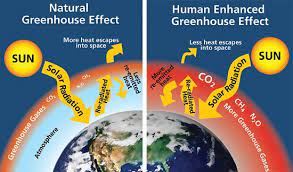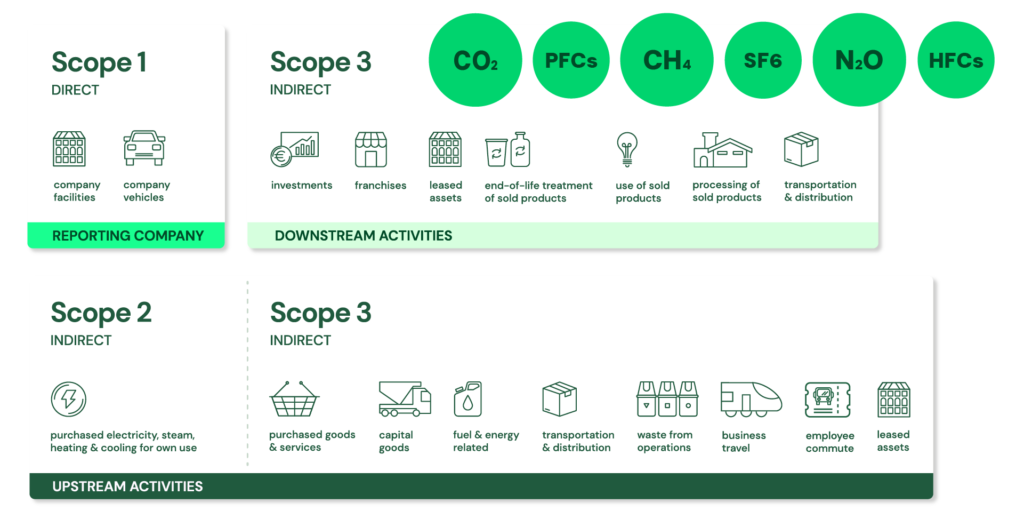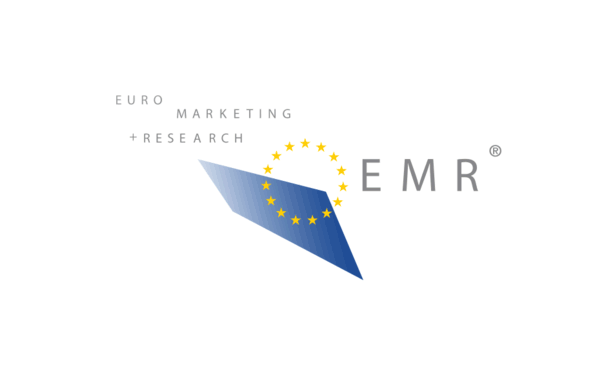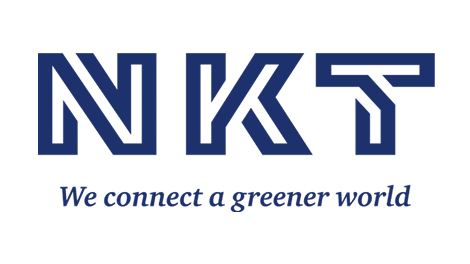NKT – NKT joins First Movers Coalition to accelerate low-carbon aluminium adoption
NKT has joined the First Movers Coalition (FMC), committing to drive the global development of low carbon aluminium.
As part of the FMC aluminium sector, NKT pledges that at least 10% of all primary aluminium procured annually will be low carbon by 2030.
The First Movers Coalition, led by the World Economic Forum, unites leading global companies to support the decarbonisation of industries that are traditionally difficult to abate.
By joining the FMC aluminium sector, NKT commits to ensuring that at least 10% (by volume) of all primary aluminium purchased each year will be low-carbon by 2030 in line with the very ambitious emissions threshold outlined in the details of the FMC commitment.
– At NKT, it is a strategic priority to continuously reduce the carbon intensity of our power cables. This supports both our sustainability targets and the decarbonisation ambitions of our customers. Our participation in the First Movers Coalition reinforces this commitment. We are pleased to contribute to the generation of a credible demand signal for emerging climate technologies, thereby helping to accelerate their commercial adoption and support the decarbonisation of some of the world’s most carbon-intensive sectors, says Anthony Abbotts, Vice President and Head of Sustainability at NKT.
– NKT’s decision to join the First Movers Coalition marks a significant step forward in the aluminium industry’s journey toward full value chain decarbonization. This commitment reflects a bold ambition to drive transformative change, and we are inspired by the growing collaboration among industry leaders working together daily to accelerate progress. Through the collective strength of the Coalition, we can amplify our impact and deliver meaningful, lasting results for the sector and beyond, says Noam Boussidan, First Movers Coalition Programme Head, World Economic Forum.
By 2050, 50% of the emissions reductions required to achieve net zero are expected to originate from technologies that are not yet available at scale. Establishing early market demand for these technologies by 2030 will be essential to catalyse their commercial adoption.
From ambition to practical reality
In April 2025, NKT signed a landmark supply agreement with Hydro, the Norwegian aluminium and energy company, to secure a long-term supply of low-carbon aluminium wire rod through to 2033.
– The agreement with Hydro plays a crucial role in NKT’s ongoing decarbonisation efforts, enabling the production of cable solutions with a significantly lower carbon footprint. It also supports the adoption of climate-critical technologies within our sector, helping to bridge the gap between technical innovation and real-world implementation. To succeed, we must turn ambition into practical reality, says Anthony Abbotts.
The agreement ensures that NKT will have access to Hydro’s REDUXA 4.0, primary aluminium, produced in Norway with renewable energy. It has a documented carbon footprint of 4 kg CO2e per kilo aluminium or less, about a quarter of the world industry average.
Hydro aims to reduce the carbon footprint by a further 25% by 2030, with NKT having first rights to Hydro’s REDUXA 3.0 primary aluminium wire rod.
Aluminium is a critical component in medium- and high-voltage power cables, which are essential for Europe’s ongoing energy transition. As society continues to electrify and renewable energy sources become more prevalent, power grids across Europe are undergoing significant upgrades.
SourceNKT
EMR Analysis
More information on NKT: See the full profile on EMR Executive Services
More information on Claes Westerlind (President and Chief Executive Officer, NKT): See the full profile on EMR Executive Services
More information on Line Andrea Fandrup (Executive Vice President, Chief Financial Officer, NKT till end of April 2026): See the full profile on EMR Executive Services
More Information on Sustainability, the ReNew BOOST Strategy and the Sustainability Report 2024 in the Annual Report 2024 by NKT: See the full profile on EMR Executive Services
More information on Anthony Abbotts (Vice President, Head of Sustainability, NKT): See the full profile on EMR Executive Services
More information on the World Economic Forum (WEF): https://www.weforum.org + The World Economic Forum is the International Organization for Public-Private Cooperation. It provides a global, impartial and not-for-profit platform for meaningful connection between stakeholders to establish trust, and build initiatives for cooperation and progress.
In a world marked by complex challenges, the World Economic Forum engages political, business, academic, civil society and other leaders of society to shape global, regional and industry agendas. Established in 1971 as a not-for-profit foundation, it is independent, impartial and not tied to any special interests, upholding the highest standards of governance and moral and intellectual integrity.
At the heart of our mission of improving the state of the world lies the belief in the power of human ingenuity, entrepreneurship, innovation and cooperation. We recognise the need for a forum fostering rigorous and respectful dialogue between and among leaders with different beliefs and viewpoints, where diversity of thought is respected and all voices can be heard. Achieving this mission is made possible by all our stakeholders, who come together to find common ground and seize opportunities for positive change.
The Forum’s commitment on facilitating progress on systemic challenges is taken forward through its 11 Centres, each applying the institution’s unique combination of impact methods to drive holistic efforts. The Centres build communities of purpose essential to addressing large-scale global challenges. Guided by these communities, our centre teams convert ambition into focused action, through structured multi-year initiatives and insight generation.
More information on Børge Brende (President and Chief Executive Officer, World Economic Forum): https://www.weforum.org/about/borge-brende/ + https://www.linkedin.com/in/b%C3%B8rge-brende-30a6a37/
More information on First Movers Coalition (FMC) by the World Economic Forum (WEF): https://initiatives.weforum.org/first-movers-coalition/home + A global coalition of companies leveraging their purchasing power to decarbonize the world’s heavy-emitting industrial sectors responsible for 30% of global emissions.
The First Movers Coalition advances the most critical, emerging climate technologies by leveraging members’ collective purchasing power. By translating member commitments into the world’s largest, credible demand signal, the FMC accelerates the adoption of emerging climate technologies to decarbonize the world’s heavy-emitting sectors.
The First Suppliers Hub is a global repository of innovative and emerging products needed to decarbonize the world by 2050.
It is a platform that surfaces current and future supply of products and services that are due to meet FMC commitments by 2030.
More information on Noam Boussidan (Programme Head, First Movers Coalition (FMC), World Economic Forum (WEF)): https://www.linkedin.com/in/noam-boussidan-6b018aa/
More information on Hydro: https://www.hydro.com/en/ + Since 1905, Hydro has turned natural resources into valuable products for people and businesses, creating a safe and secure workplace for our 32,000 employees in more than 140 locations and 42 countries.
Today, we own and operate various businesses and have investments with a base in sustainable industries. Hydro is through its businesses present in a broad range of market segments for aluminium, energy, metal recycling, renewables and batteries, offering a unique wealth of knowledge and competence.
- 2024 Revenue: NOK 203,636 million
- Adjusted EBITDA: NOK 26,318 million
- Net income from continuing operations: NOK 5,040 million
More information on Eivind Kallevik (President and Chief Executive Officer, Hydro): https://www.hydro.com/en/global/about-hydro/management-and-organization/corporate-management/ + https://www.linkedin.com/in/eivindkallevik/
More information on REDUXA 4.0 by Hydro: https://www.hydro.com/en/global/aluminium/products/low-carbon-and-recycled-aluminium/low-carbon-aluminium/hydro-reduxa/ + Hydro REDUXA is our brand of low-carbon aluminium. Using renewable energy from water (hydro power) and wind, we can produce cleaner aluminium, reducing the carbon footprint per kg of aluminium to 4.0 which is about a quarter of the global average.
EMR Additional Notes:
- Carbon Dioxide (CO2):
- The primary greenhouse gas emitted through human activities. Carbon dioxide enters the atmosphere through burning fossil fuels (coal, natural gas, and oil), solid waste, trees and other biological materials, and also as a result of certain chemical reactions (e.g., manufacture of cement). Carbon dioxide is removed from the atmosphere (or “sequestered”) when it is absorbed by plants as part of the biological carbon cycle.
- Biogenic Carbon Dioxide (CO2):
- Biogenic Carbon Dioxide (CO2) and Carbon Dioxide (CO2) are the same molecule. Scientists differentiate between biogenic carbon (that which is absorbed, stored and emitted by organic matter like soil, trees, plants and grasses) and non-biogenic carbon (that found in all other sources, most notably in fossil fuels like oil, coal and gas).
- CO2e (Carbon Dioxide Equivalent):
- CO2e means “carbon dioxide equivalent”. In layman’s terms, CO2e is a measurement of the total greenhouse gases emitted, expressed in terms of the equivalent measurement of carbon dioxide. On the other hand, CO2 only measures carbon emissions and does not account for any other greenhouse gases.
- A carbon dioxide equivalent or CO2 equivalent, abbreviated as CO2-eq is a metric measure used to compare the emissions from various greenhouse gases on the basis of their global-warming potential (GWP), by converting amounts of other gases to the equivalent amount of carbon dioxide with the same global warming potential.
- Carbon dioxide equivalents are commonly expressed as million metric tonnes of carbon dioxide equivalents, abbreviated as MMTCDE.
- The carbon dioxide equivalent for a gas is derived by multiplying the tonnes of the gas by the associated GWP: MMTCDE = (million metric tonnes of a gas) * (GWP of the gas).
- For example, the GWP for methane is 25 and for nitrous oxide 298. This means that emissions of 1 million metric tonnes of methane and nitrous oxide respectively is equivalent to emissions of 25 and 298 million metric tonnes of carbon dioxide.
- Carbon Footprint:
- There is no universally agreed definition of what a carbon footprint is.
- A carbon footprint is generally understood to be the total amount of greenhouse gas (GHG) emissions that are directly or indirectly caused by an individual, organization, product, or service. These emissions are typically measured in tonnes of carbon dioxide equivalent (CO2e).
- In 2009, the Greenhouse Gas Protocol (GHG Protocol) published a standard for calculating and reporting corporate carbon footprints. This standard is widely accepted by businesses and other organizations around the world. The GHG Protocol defines a carbon footprint as “the total set of greenhouse gas emissions caused by an organization, directly and indirectly, through its own operations and the value chain.”
- Decarbonization:
- Reduction of carbon dioxide emissions through the use of low carbon power sources, and achieving a lower output of greenhouse gases into the atmosphere.
- Carbon Credits or Carbon Offsets:
- Permits that allow the owner to emit a certain amount of carbon dioxide or other greenhouse gases. One credit permits the emission of one ton of carbon dioxide or the equivalent in other greenhouse gases.
- The carbon credit is half of a so-called cap-and-trade program. Companies that pollute are awarded credits that allow them to continue to pollute up to a certain limit, which is reduced periodically. Meanwhile, the company may sell any unneeded credits to another company that needs them. Private companies are thus doubly incentivized to reduce greenhouse emissions. First, they must spend money on extra credits if their emissions exceed the cap. Second, they can make money by reducing their emissions and selling their excess allowances.
- Carbon Capture and Storage (CCS) – Carbon Capture, Utilisation and Storage (CCUS):
- CCS involves the capture of carbon dioxide (CO2) emissions from industrial processes. This carbon is then transported from where it was produced, via ship or in a pipeline, and stored deep underground in geological formations.
- CCS projects typically target 90 percent efficiency, meaning that 90 percent of the carbon dioxide from the power plant will be captured and stored.
- CCUS adds the utilization aspect, where the captured CO2 is used as a new product or raw material.
- Carbon Dioxide Removal (CDR) or Durable Carbon Removal:
- Carbon Dioxide Removal encompasses approaches and methods for removing CO2 from the atmosphere and then storing it permanently in underground geological formations, in biomass, oceanic reservoirs or long-lived products in order to achieve negative emissions.
- Direct Air Capture (DAC):
- Technologies that extract CO2 directly from the atmosphere at any location, unlike carbon capture which is generally carried out at the point of emissions, such as a steel plant.
- Constraints like costs and energy requirements as well as the potential for pollution make DAC a less desirable option for CO2 reduction. Its larger land footprint when compared to other mitigation strategies like carbon capture and storage systems (CCS) also put it at a disadvantage.
- Direct Air Capture and Storage (DACCS):
- Climate technology that removes carbon dioxide (CO2) directly from the ambient atmosphere using large fans and chemical processes to bind with the CO2.
- Bioenergy with Carbon Capture and Storage (BECCS):
- Negative emissions technology that captures carbon dioxide (CO2) from biomass used for energy production and stores it permanently. Plants absorb CO2 from the atmosphere as they grow (photosynthesis), and BECCS interrupts the cycle by capturing this biogenic CO2 during the energy conversion process—burning, fermentation, etc.—instead of letting it re-enter the atmosphere.
- Enhanced Rock Weathering (ERW):
- Carbon dioxide removal (CDR) technique that accelerates the natural process of rock weathering by grinding silicate rocks into dust and spreading it on land, typically agricultural fields. This process uses rainwater to convert atmospheric carbon dioxide into mineral carbonates, which are then stored long-term in soils, groundwater, and oceans.
- Limits of Carbon Dioxide Storage:
- Carbon storage is not endless; the Earth’s capacity for permanently storing vast amounts of captured carbon, particularly in geological formations, is limited, potentially reaching a critical limit of 1,460 gigatonnes at around 2200, though storage durations vary significantly depending on the method, from decades for some biological methods to potentially millions of years for others like mineralization. While some methods offer very long-term storage, the sheer volume needed to meet climate targets requires scaling up storage significantly beyond current capacity, raising concerns about the available volume over time.
- Global Warming:
- Global warming is the long-term heating of Earth’s climate system observed since the pre-industrial period (between 1850 and 1900) due to human activities, primarily fossil fuel burning, which increases heat-trapping greenhouse gas levels in Earth’s atmosphere.
- Global Warming Potential (GWP):
- The heat absorbed by any greenhouse gas in the atmosphere, as a multiple of the heat that would be absorbed by the same mass of carbon dioxide (CO2). GWP is 1 for CO2. For other gases it depends on the gas and the time frame.
- Carbon dioxide equivalent (CO2e or CO2eq or CO2-e) is calculated from GWP. For any gas, it is the mass of CO2 which would warm the earth as much as the mass of that gas. Thus it provides a common scale for measuring the climate effects of different gases. It is calculated as GWP times mass of the other gas. For example, if a gas has GWP of 100, two tonnes of the gas have CO2e of 200 tonnes.
- GWP was developed to allow comparisons of the global warming impacts of different gases.
- Greenhouse Gas (GHG):
- A greenhouse gas is any gaseous compound in the atmosphere that is capable of absorbing infrared radiation, thereby trapping and holding heat in the atmosphere. By increasing the heat in the atmosphere, greenhouse gases are responsible for the greenhouse effect, which ultimately leads to global warming.
- The main gases responsible for the greenhouse effect include carbon dioxide, methane, nitrous oxide, and water vapor (which all occur naturally), and fluorinated gases (which are synthetic).

- GHG Protocol Corporate Standard Scope 1, 2 and 3: https://ghgprotocol.org/ + The GHG Protocol Corporate Accounting and Reporting Standard provides requirements and guidance for companies and other organizations preparing a corporate-level GHG emissions inventory. Scope 1 and 2 are typically mandatory for companies that are required to report their emissions by national or regional regulations. The GHG Protocol itself is a voluntary standard.
- Scope 1: Direct emissions:
- Direct emissions from company-owned and controlled resources. In other words, emissions are released into the atmosphere as a direct result of a set of activities, at a firm level. It is divided into four categories:
- Stationary combustion (e.g from fuels, heating sources). All fuels that produce GHG emissions must be included in scope 1.
- Mobile combustion is all vehicles owned or controlled by a firm, burning fuel (e.g. cars, vans, trucks). The increasing use of “electric” vehicles (EVs), means that some of the organisation’s fleets could fall into Scope 2 emissions.
- Fugitive emissions are leaks from greenhouse gases (e.g. refrigeration, air conditioning units). It is important to note that refrigerant gases are a thousand times more dangerous than CO2 emissions. Companies are encouraged to report these emissions.
- Process emissions are released during industrial processes, and on-site manufacturing (e.g. production of CO2 during cement manufacturing, factory fumes, chemicals).
- Direct emissions from company-owned and controlled resources. In other words, emissions are released into the atmosphere as a direct result of a set of activities, at a firm level. It is divided into four categories:
- Scope 2: Indirect emissions – owned:
- Indirect emissions from the generation of purchased energy, from a utility provider. In other words, all GHG emissions released in the atmosphere, from the consumption of purchased electricity, steam, heat and cooling. For most organisations, electricity will be the unique source of scope 2 emissions. Simply stated, the energy consumed falls into two scopes: Scope 2 covers the electricity consumed by the end-user. Scope 3 covers the energy used by the utilities during transmission and distribution (T&D losses).
- Scope 3: Indirect emissions – not owned:
- Indirect emissions – not included in scope 2 – that occur in the value chain of the reporting company, including both upstream and downstream emissions. In other words, emissions are linked to the company’s operations. According to the GHG protocol, scope 3 emissions are separated into 15 categories.
- Scope 1: Direct emissions:

- Power Cable:
- A power cable is a type of electrical cable used to transmit electrical power. It typically consists of one or more insulated conductors surrounded by a protective outer sheath.
- Types of power cables:
- Overhead cables: These are suspended from poles or towers and are commonly used for long-distance power transmission.
- Underground cables: These are installed underground and are typically used for local distribution or in areas where overhead lines are impractical or unsafe.
- Submarine cables: These are laid underwater to connect islands, countries, or offshore wind farms to the mainland power grid.
- Medium-voltage cables: These are used for the distribution of electrical power from substations to local areas.
- Low-voltage cables: These are used for the final distribution of power to individual homes and businesses.
- Superconducting Power Cable:
- A superconducting power cable is a type of electrical cable that uses superconducting materials to conduct electricity with zero resistance. This means that no energy is lost due to heat dissipation, making it significantly more efficient than traditional copper or aluminum cables. Superconducting cables can be used to transmit large amounts of power over long distances with minimal energy losses.
- Telecommunication Cable:
- Distinct category of cable with a different primary purpose: transmitting signals rather than power.
- Telecommunication cables transmit various signals, like voice, data, and video, over distances and include types such as twisted pair cables, which use insulated copper wires for signals; coaxial cables, designed to carry both signals and ground in concentric layers; and fiber optic cables, which transmit data as pulses of light.
- Grid, Microgrids, DERs and DERM’s:
- Grid / Power Grid:
- The power grid is a network for delivering electricity to consumers. The power grid includes generator stations, transmission lines and towers, and individual consumer distribution lines.
- The grid constantly balances the supply and demand for the energy that powers everything from industry to household appliances.
- Electric grids perform three major functions: power generation, transmission, and distribution.
- The power grid is a network for delivering electricity to consumers. The power grid includes generator stations, transmission lines and towers, and individual consumer distribution lines.
- Microgrid:
- Small-scale power grid that can operate independently or collaboratively with other small power grids. The practice of using microgrids is known as distributed, dispersed, decentralized, district or embedded energy production.
- Smart Grid:
- Any electrical grid + IT at all levels.
- Micro Grid:
- Group of interconnected loads and DERs (Distributed Energy Resources) within a clearly defined electrical and geographical boundaries witch acts as a single controllable entity with respect to the main grid.
- Distributed Energy Resources (DERs):
- Small-scale electricity supply (typically in the range of 3 kW to 50 MW) or demand resources that are interconnected to the electric grid. They are power generation resources and are usually located close to load centers, and can be used individually or in aggregate to provide value to the grid.
- Common examples of DERs include rooftop solar PV units, natural gas turbines, microturbines, wind turbines, biomass generators, fuel cells, tri-generation units, battery storage, electric vehicles (EV) and EV chargers, and demand response applications.
- Small-scale electricity supply (typically in the range of 3 kW to 50 MW) or demand resources that are interconnected to the electric grid. They are power generation resources and are usually located close to load centers, and can be used individually or in aggregate to provide value to the grid.
- Distributed Energy Resources Management Systems (DERMS):
- Platforms which helps mostly distribution system operators (DSO) manage their grids that are mainly based on distributed energy resources (DER).
- DERMS are used by utilities and other energy companies to aggregate a large energy load for participation in the demand response market. DERMS can be defined in many ways, depending on the use case and underlying energy asset.
- Platforms which helps mostly distribution system operators (DSO) manage their grids that are mainly based on distributed energy resources (DER).
- Grid / Power Grid:


